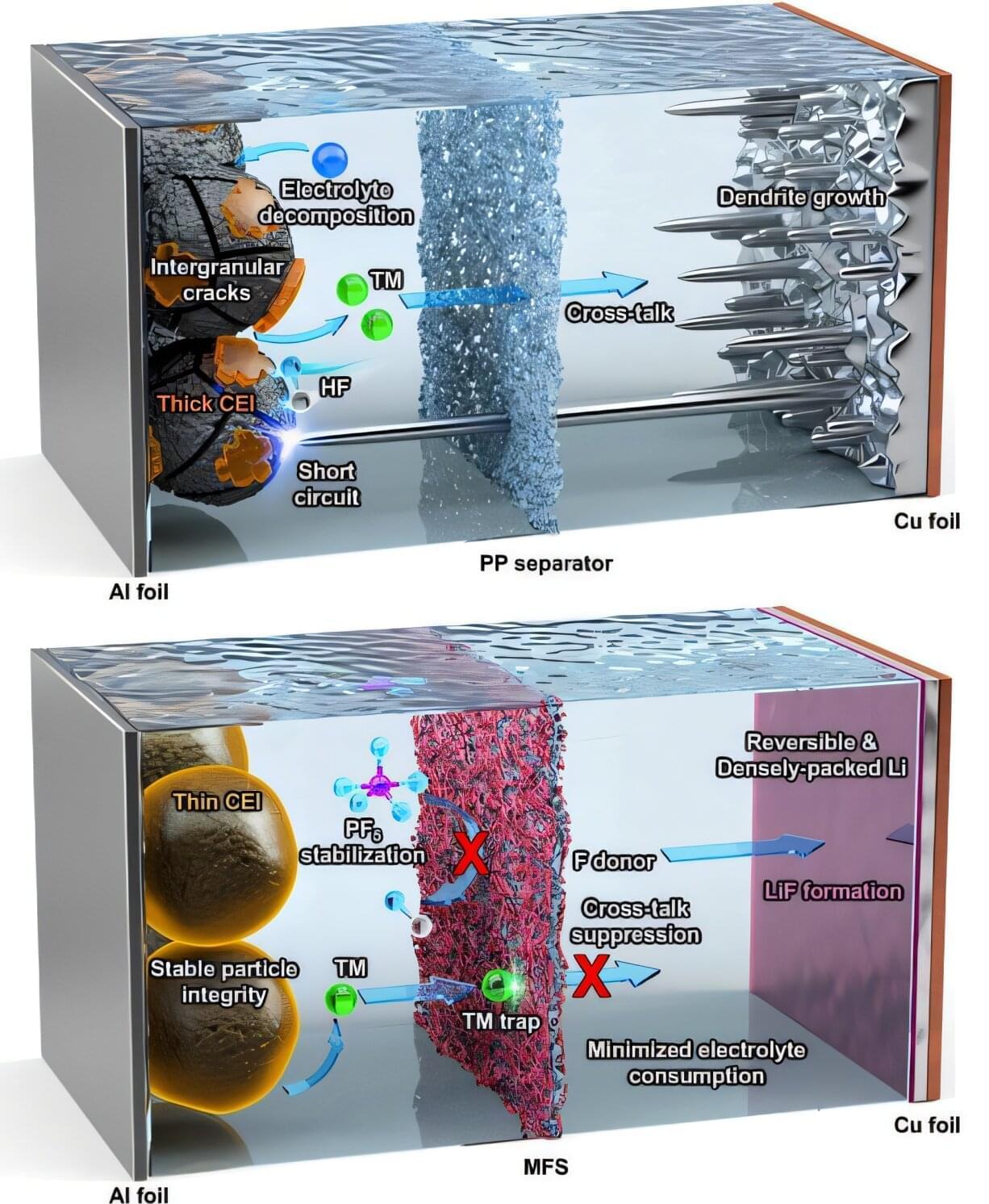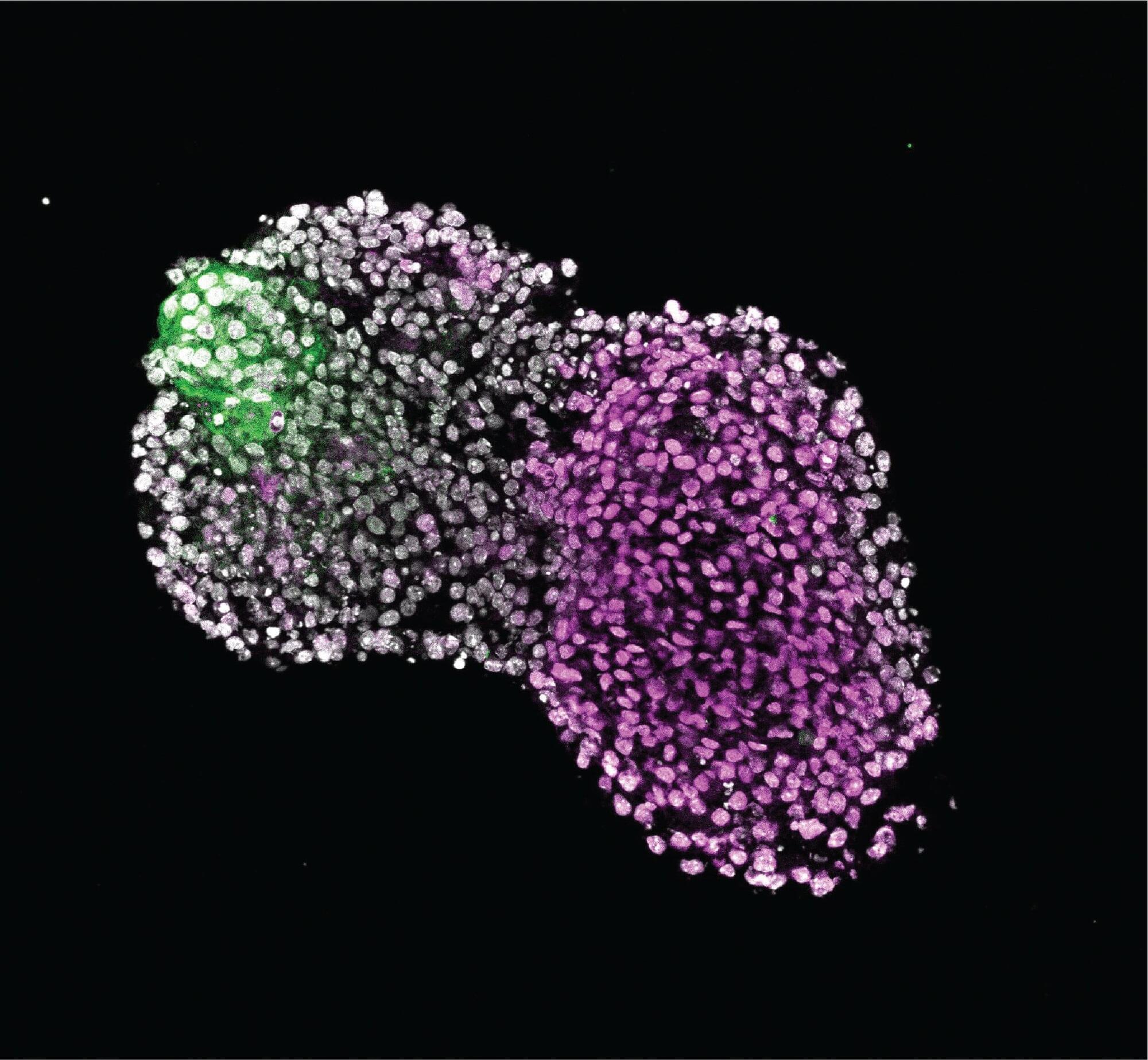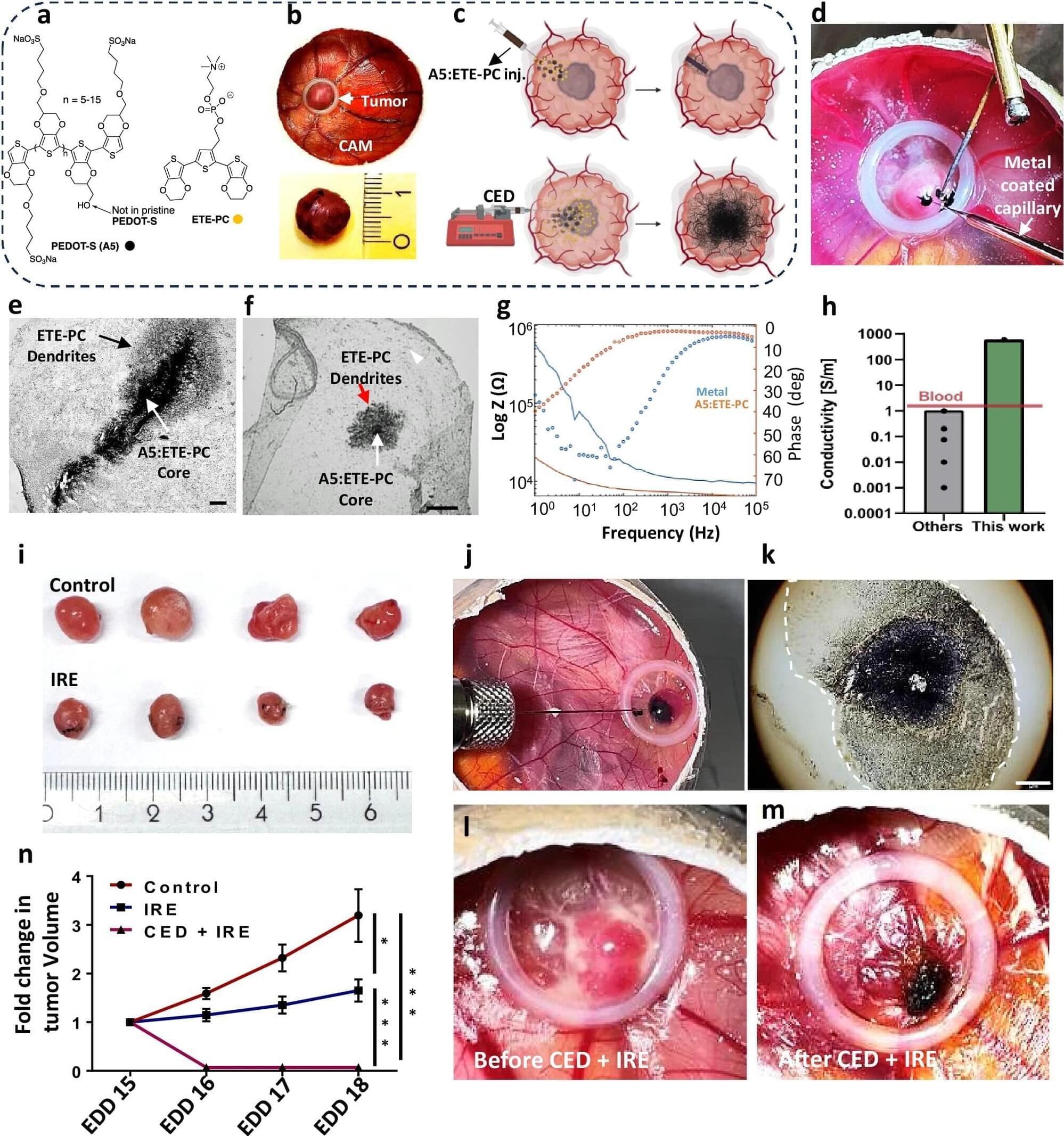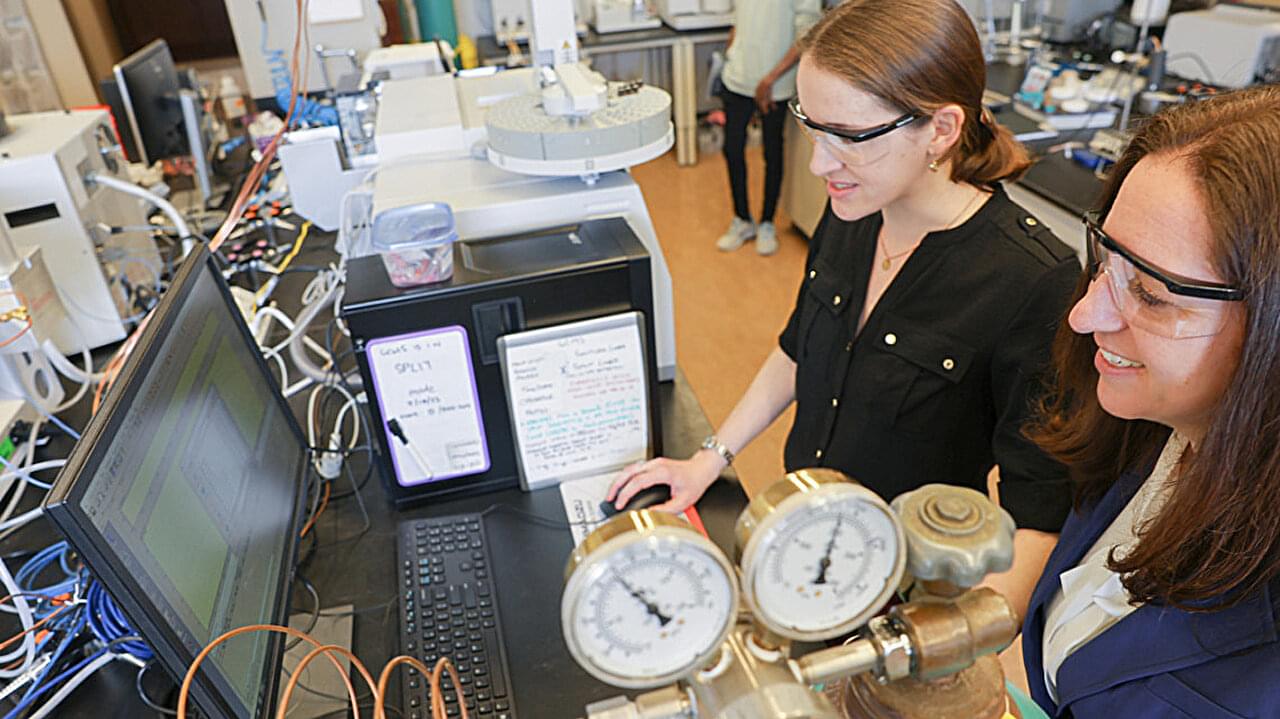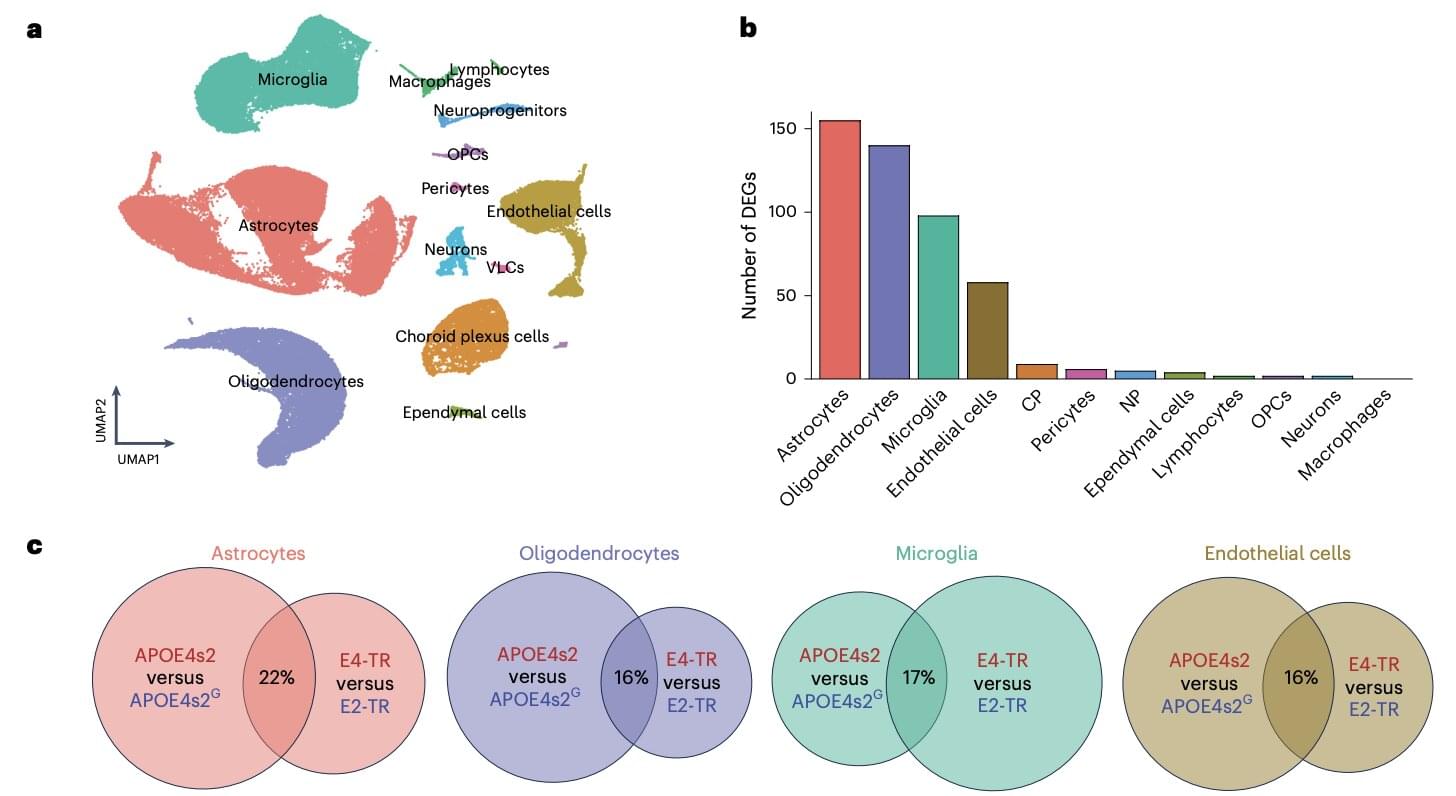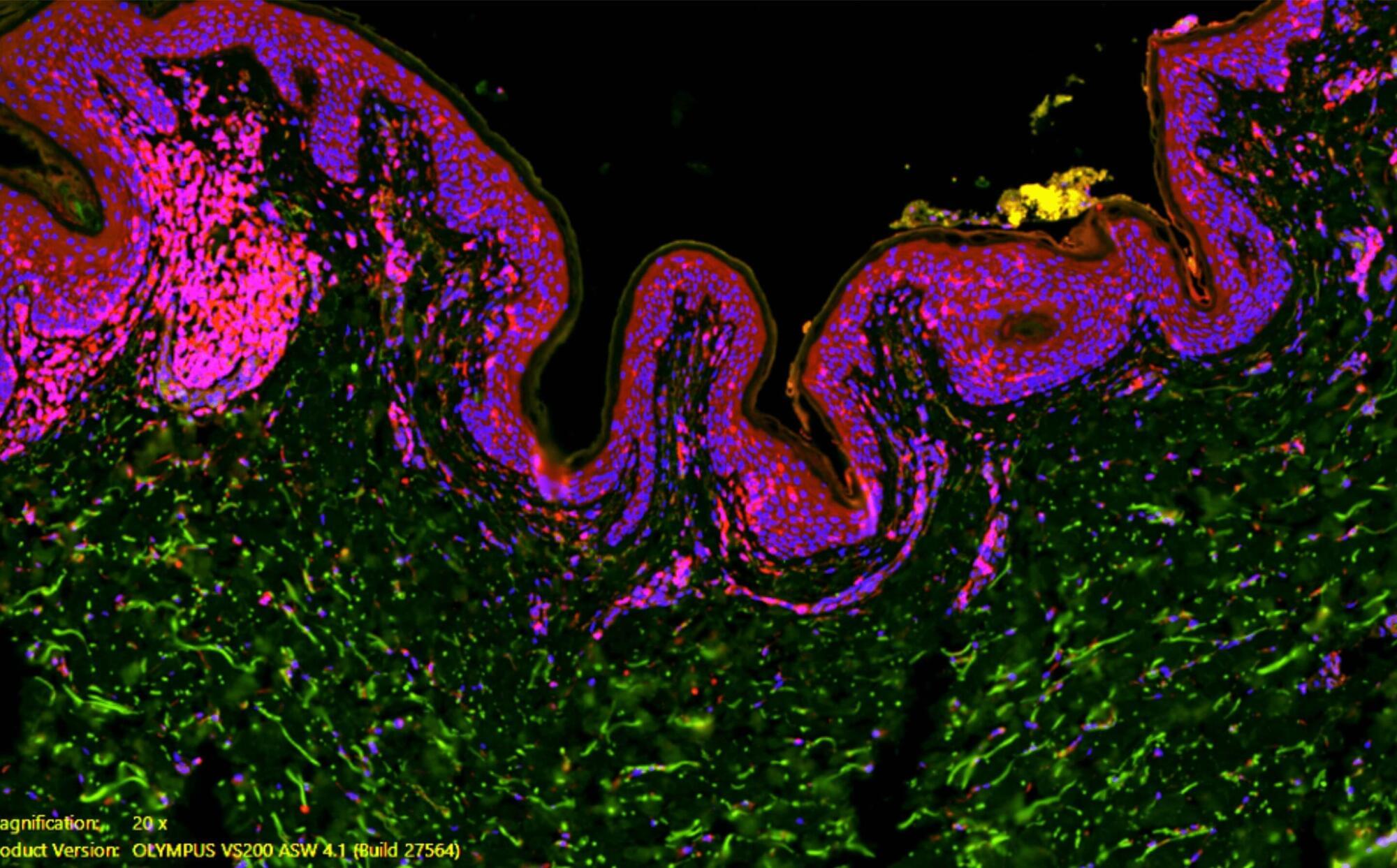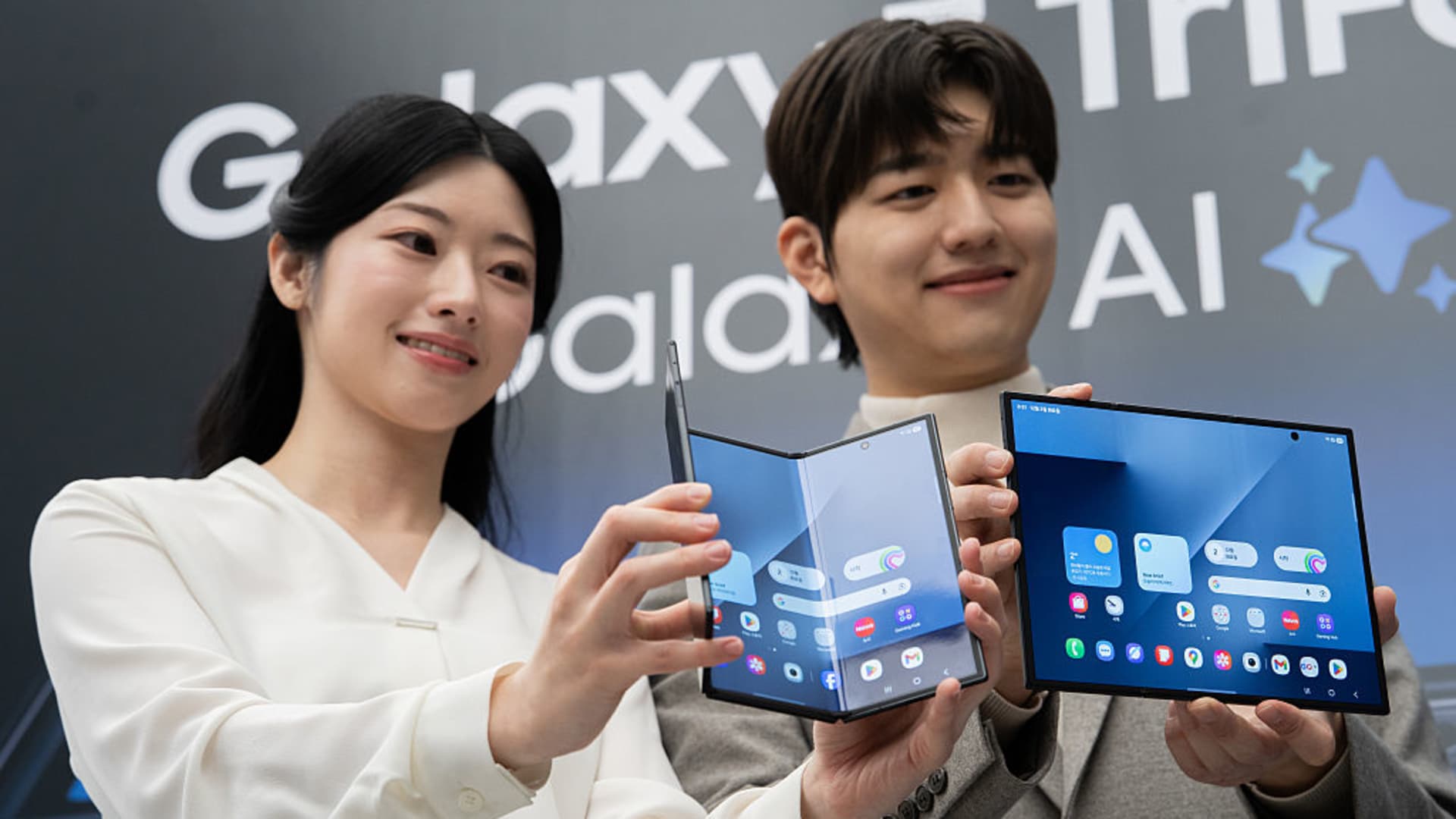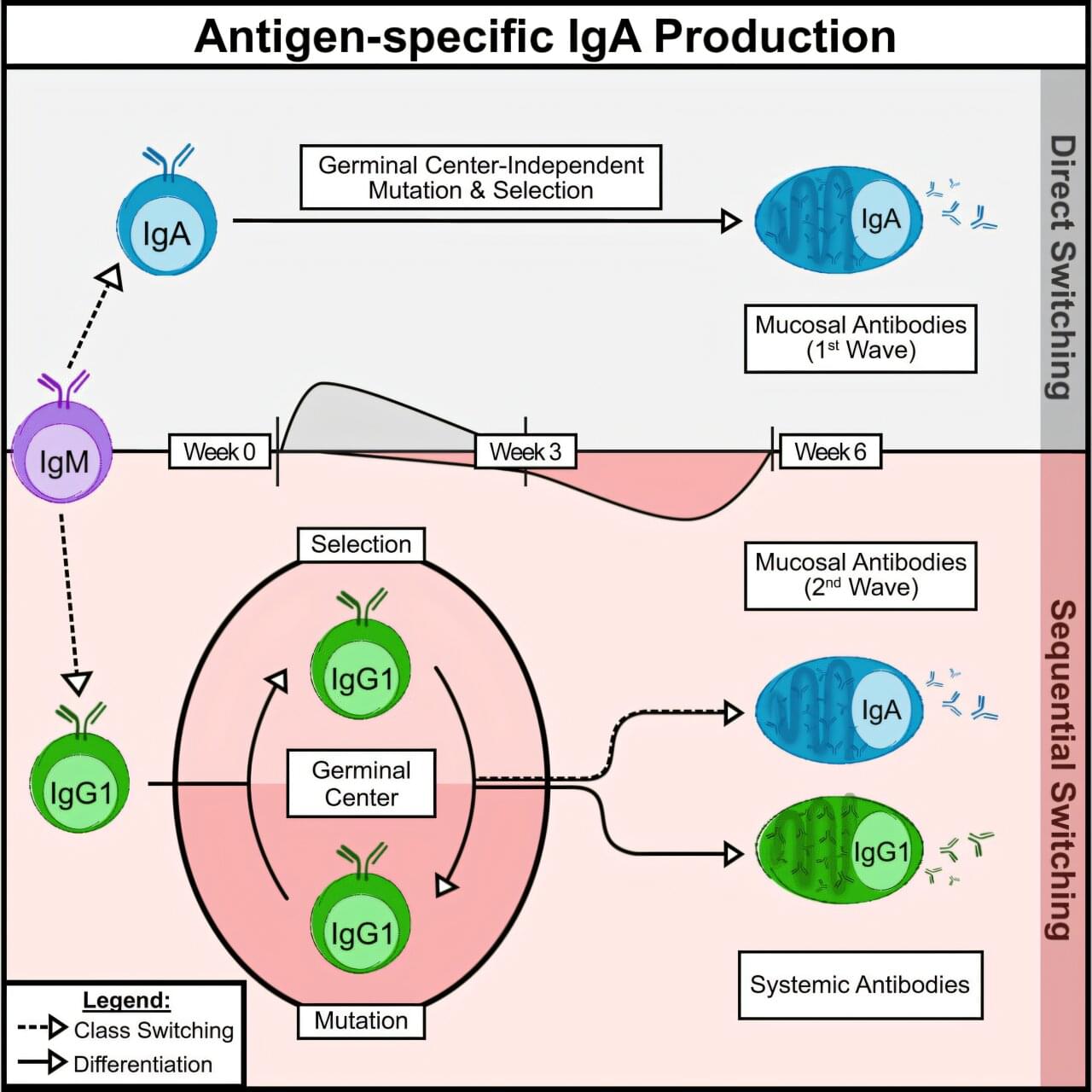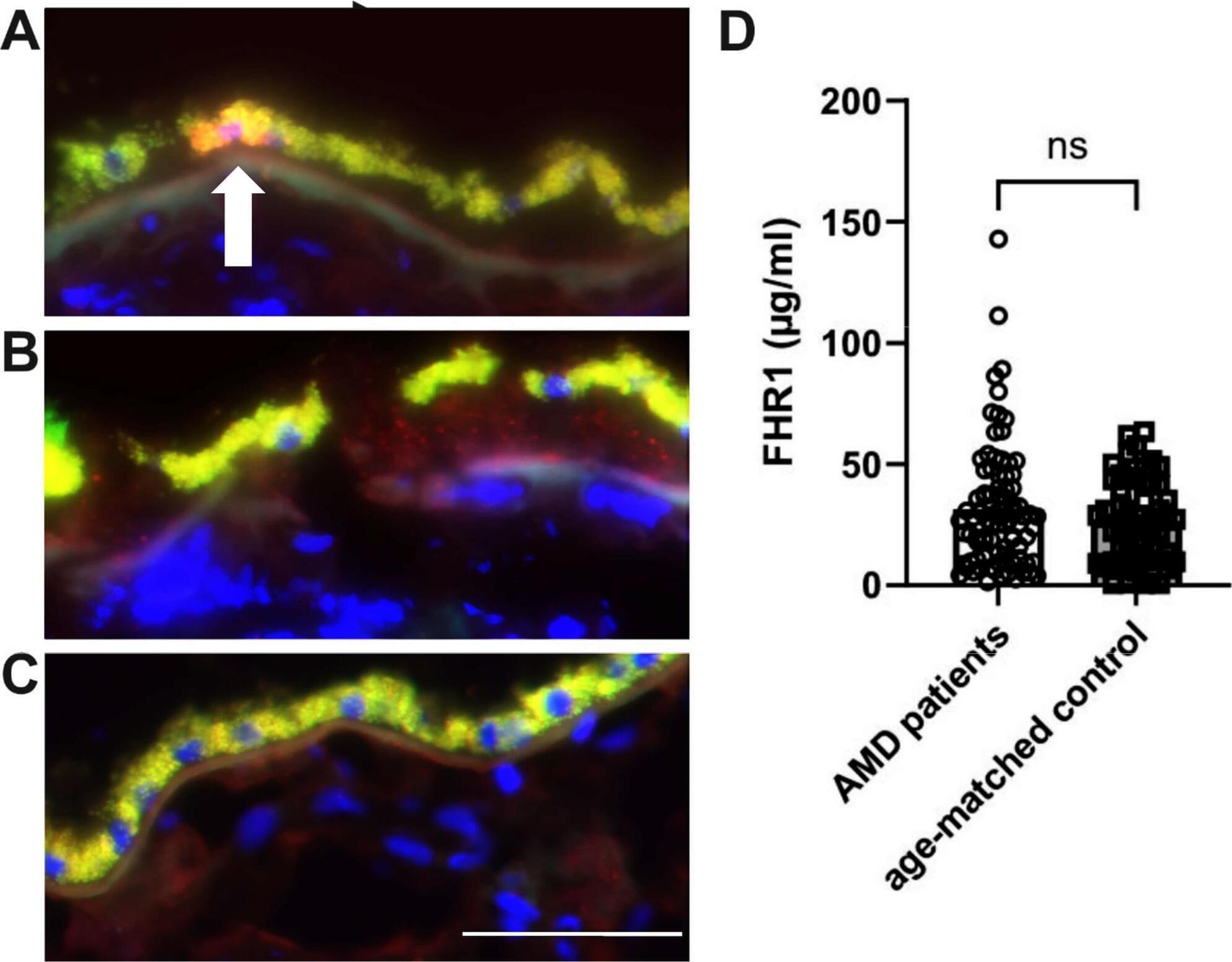A team of Korean scientists has developed a separator technology that dramatically reduces the explosion risk of lithium batteries while doubling their lifespan. Like an ultra-thin bulletproof vest protecting both sides, this molecularly engineered membrane stabilizes both the anode and cathode in next-generation lithium-metal batteries.
The joint research, led by Professor Soojin Park and Dr. Dong-Yeob Han from the Department of Chemistry at POSTECH, together with Professor Tae Kyung Lee of Gyeongsang National University and Dr. Gyujin Song of the Korea Institute of Energy Research (KIER), was recently published in Energy & Environmental Science.
Conventional lithium-ion batteries, which power today’s electric vehicles and energy storage systems, are approaching their theoretical energy limits. In contrast, lithium-metal batteries can store about 1.5 times more energy within the same volume, potentially extending an electric vehicle’s driving range from 400 km to approximately 700 km per charge. However, their practical use has been hindered by serious safety issues.
